
Sallustiano is the 17th rione of Rome, identified by the initials R. XVII. It is located within the Municipio I and the name refers to the ancient Gardens of Sallust, which were located here.

Prati is the 22nd rione of Rome, identified by the initials R. XXII. It belongs to the Municipio I since 2013, while previously, along with Borgo and quartieri Trionfale and Della Vittoria, it was part of the Municipio XVII.

Parioli is the 2nd quartiere of Rome, identified by the initials Q. II.

The Istrian–Dalmatian exodus was the post-World War II exodus and departure of local ethnic Italians as well as ethnic Slovenes, Croats, and Istro-Romanians from Yugoslavia. The emigrants, who had lived in the now Yugoslav territories of the Julian March, Kvarner and Dalmatia, largely went to Italy, but some joined the Italian diaspora in the Americas, Australia and South Africa. These regions were ethnically mixed, with long-established historic Croatian, Italian, and Slovene communities. After World War I, the Kingdom of Italy annexed Istria, Kvarner, the Julian March and parts of Dalmatia including the city of Zadar. At the end of World War II, under the Allies' Treaty of Peace with Italy, the former Italian territories in Istria, Kvarner, the Julian March and Dalmatia were assigned to the nation of Yugoslavia, except for the Province of Trieste. The former territories absorbed into Yugoslavia are part of present-day Croatia and Slovenia.

Novara is the capital city of the province of Novara in the Piedmont region in northwest Italy, to the west of Milan. With 101,916 inhabitants, it is the second most populous city in Piedmont after Turin. It is an important crossroads for commercial traffic along the routes from Milan to Turin and from Genoa to Switzerland. Novara lies between the rivers Agogna and Terdoppio in northeastern Piedmont, 50 kilometres (31 mi) from Milan and 95 kilometres (59 mi) from Turin.
Dalmatian Italians are the historical Italian national minority living in the region of Dalmatia, now part of Croatia and Montenegro. Since the middle of the 19th century, the community, counting according to some sources nearly 20% of all Dalmatian population in 1840, suffered from a constant trend of decreasing presence and now, as a result of the Istrian-Dalmatian exodus, numbers only around 1,000–4,000 people. Throughout history, though small in numbers in the last two centuries, it exerted a vast and significant influence on the region.

Laurentina is the southern terminus of Line B of the Rome Metro. It is in the Giuliano-Dalmata quarter at the crossroads of Via Laurentina, Via di Vigna Murata, Viale Luca Gaurico and Largo Vittime delle Foibe Istriane The first station on the site was begun in the 1930s, but only completed and opened in 1955. This was demolished in the 1980s, and the present building opened in 1990. It is also the terminus for several suburban bus routes.
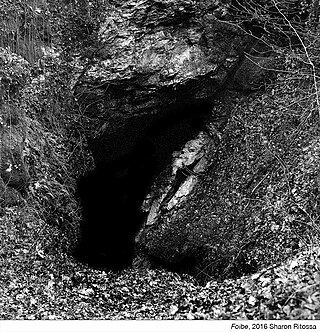
The foibe massacres, or simply the foibe, refers to mass killings both during and after World War II, mainly committed by Yugoslav Partisans and OZNA in the then-Italian territories of Julian March, Kvarner and Dalmatia, against the local ethnic Italian population, as well the ethnic Slovenes, Croats and Istro-Romanians who chose to maintain Italian citizenship, against all anti-communists, associated with fascism, Nazism, and collaboration with the Axis powers, and against real, potential or presumed opponents of Titoism. The type of attack was state terrorism, reprisal killings, while ethnic cleansing against Italians is still disputed.

Istrian Italians are an ethnic group from the Adriatic region of Istria in modern northwestern Croatia and southwestern Slovenia. Istrian Italians descend from the original Latinized population of Roman Histria, from the Venetian-speaking settlers who colonized the region during the time of the Republic of Venice, and from the local South Slavic people who culturally assimilated.

ATAC S.p.A. is an Italian publicly owned company running most of the local public transportation services, paid parking and incentive parking lots in Rome. More specifically, the company handles, on behalf of Roma Capitale Authority, the entire tramway, trolleybus network and metro lines, as well as most of the bus lines in the city. It also operates, on behalf of the Administrative Region of Lazio, three railways: Roma-Civita Castellana-Viterbo, Roma-Giardinetti and Roma-Lido. ATAC S.p.A., with its 2,200-kilometer-wide public transport network, its over 8,500 busses and 70,000 parking stalls, is currently one of the biggest public transportation companies in Europe and the largest in Italy.

Val Melaina is the 1st zona of Rome, identified by the initials Z. I, lying north of the city centre and covering an area of 6.2447 km².
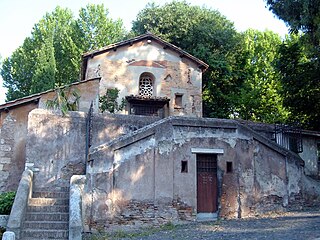
Portuense is the 11th quartiere of Rome (Italy), identified by the initials Q.XI.
San Marco Evangelista in Agro Laurentino is a Catholic church in Rome, Italy on the Piazza Giuliani e Dalmati in the Giuliano-Dalmata quarter. The dedication to Saint Mark alludes to the presence in the area of Istrian and Dalmatian refugees, as does the Lion of St. Mark above the portico.

Pietralata is the 21st quartiere of Rome, identified by the initials Q. XXI, and belongs to the Municipio IV. Its name comes from the Latin Prata Lata meaning large fields, which is possibly a reference to the large amount of nature and vegetation present.

Tor Cervara is the 7th zona of the Italian capital Rome, identified by the initials Z. VII. It belongs to the Municipio IV and has 13,975 inhabitants (2016). It is located in the east of the city, within the Grande Raccordo Anulare, and has an area of 5.9000 km2.
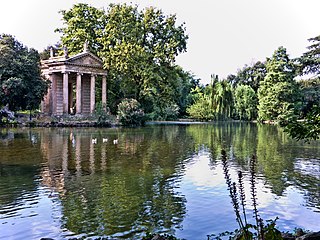
Pinciano is the 3rd quartiere of Rome (Italy), identified by the initials Q. III. The name derives from the Pincian Hill. It belongs to the Municipio II.
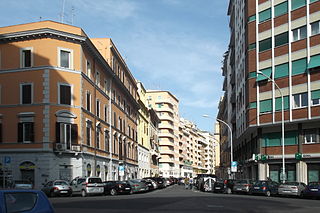
Tuscolano is the 8th quartiere of Rome (Italy), identified by the initials Q. VIII. The name derives from the ancient road Via Tuscolana. It belongs to the Municipio V and Municipio VII.
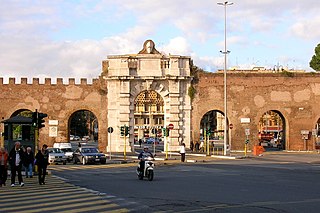
Appio-Latino is the 9th quartiere of Rome (Italy), identified by the initials Q. IX. The name derives from the ancient roads Via Appia and Via Latina. It belongs to the Municipio VII and Municipio VIII.
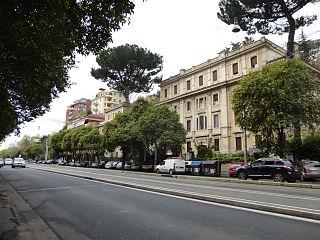
Gianicolense[dʒanikoˈlɛnse] is the 12th quartiere of Rome (Italy), identified by the initials Q. XII. It belongs to the Municipio XI and Municipio XII. It takes its name from the Janiculum hill, which lies in the nearby rione Trastevere and whose western extremities correspond to the area of Monteverde.

Ardeatino is the 20th quartiere of Rome (Italy), identified by the initials Q. XX. It belongs to the Municipio I and VIII.





















